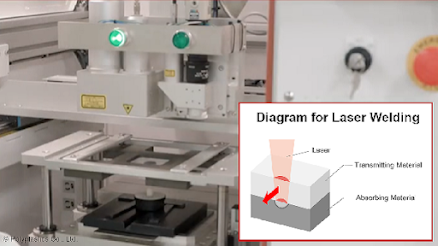Polyplastic’s PPS Successfully Used for Laser Welded Automotive Parts
Polyplastics Co. Ltd., a supplier of engineering thermoplastics, is finding successful use of polyphenylene sulfide (PPS) in laser welded applications such as automotive parts thanks to materials with enhanced capabilities.
The company offers DURAFIDE® PPS which delivers greater transmittance and toughness and facilitates laser welding in a range of applications.
Increased Transmittance and Toughness
Laser welding is a joining method that offers a long list of advantages, but it has been difficult to actually use with PPS due to its low laser transmittance and related mass production issues such as a narrow processing window.
Polyplastics’ linear-type DURAFIDE® PPS is characterized by its white natural color, as opposed to the reddish-brown natural color of competitive crosslink-type PPS materials. That gives it superior laser transmissibility (light transmissibility in the infrared region) and makes laser welding possible.
DURAFIDE® PPS provides approximately a 6% improvement in laser transmittance which results in a wider processing window for a broad range of welding conditions. The material also delivers an approximately 28% improvement in toughness versus standard grades. This exceptional toughness is important for initial strength and durability. DURAFIDE® PPS also offers strong dimensional stability, low warpage, and chemical resistance.
DURAFIDE® PPS enables the use of laser welding for the production of automotive electric components for which this method could not readily be used before. These parts include electric water pumps, shift actuators, electric-variable valve timing actuators, solenoid valves, and various sensors.
Polyplastics is currently undertaking a development project to provide even better laser transmittance of PPS and further widen the processing window.
Source: Polyplastics
Visit MY BLOG http://polymerguru.blogspot.com




Comments
Post a Comment